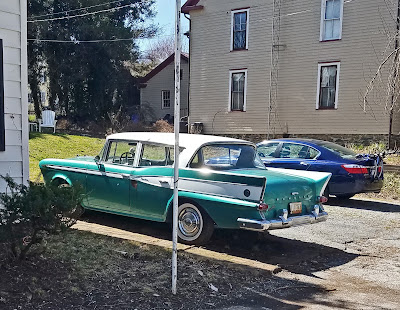 |
| John Brown's Fort (7/29/1999) |
Views from The Point in Harpers Ferry:
 |
| View south toward the Shenandoah River with stone piers of an 1882 bridge that was destroyed in a 1936 flood |
 |
| View farther upriver on the Shenandoah (7/29/1999) |
 |
| Panoramic view east toward the Potomac River and bridges |
 |
| Railroad Bridge (7/29/1999), now a pedestrian walkway and part of the Appalachian Trail |
 |
| Bollman truss railroad bridge abutments (1868-1936) replacing earlier bridges that had to be rebuilt nine times during the Civil War! (7/29/1999) |
 |
| Maryland Heights cliffs: home to at least one pair of Falco peregrinus/Peregrine Falcons; we saw one in flight! |
 |
| John Brown Monument (1895) marks the original site of John Brown's Fort/Armory Engine House that was covered by a railroad embankment in 1892 |
 |
| This photo shows the original location of John Brown's Fort with St Peter's Church up the hill on the left; it also shows temporary housing for escaped slaves |
 |
| Site of the Harpers Ferry Armory (1799-1802), was the second federal armory built in the United States, for the manufacture of arms |
*15 rifles (modified by Lewis)
24 pipe tomahawks
36 pipe tomahawks for “Indian Presents”
24 large knives for “Indian Presents”
15 powder horns and pouches
15 pairs of bullet molds
15 wipers or gun worms
15 ball screws
15 gun slings
extra parts of locks and tools for repairing arms
40 fish giggs (multi pointed-fish spears) for “Indian Presents”
collapsible iron boat frame
1 small grindstone*
 |
| Remains of one of several tailraces emptying into the Potomac River; water power was used to run the machines of the armory (KSS) |
After lunch, we headed uphill from the Lower Town of Harpers Ferry.
 |
| Forsythia sp in full bloom |
 |
| Harper slate gateway |
 |
| The Hilltop House property includes five Armory Dwellings (1827-1837, as worker housing) on Magazine Hill |
 |
| Panoramic view from Hilltop House over the Potomac River (KSS) |
 |
| Harpers Ferry Public Square (1852) with gazebo (1908) |
 |
| 1959 Rambler Rebel V-8 Country Club Hardtop (KSS) |
 |
| Charmandoah (an "accommodation") |
 |
| We took the steep Potomac Heritage National Scenic Trail back down the ridge |
 |
| Ruins of the Shenandoah Pulp Mill (1887-1888) that had ten turbines over five sluiceways, closed in 1935 and is the last remnant of water-powered industry in Harpers Ferry |
*On 4/18/1803, Meriwether Lewis departed Harpers Ferry.*
Next: Lewis & Clark Trip 1 C.






No comments:
Post a Comment